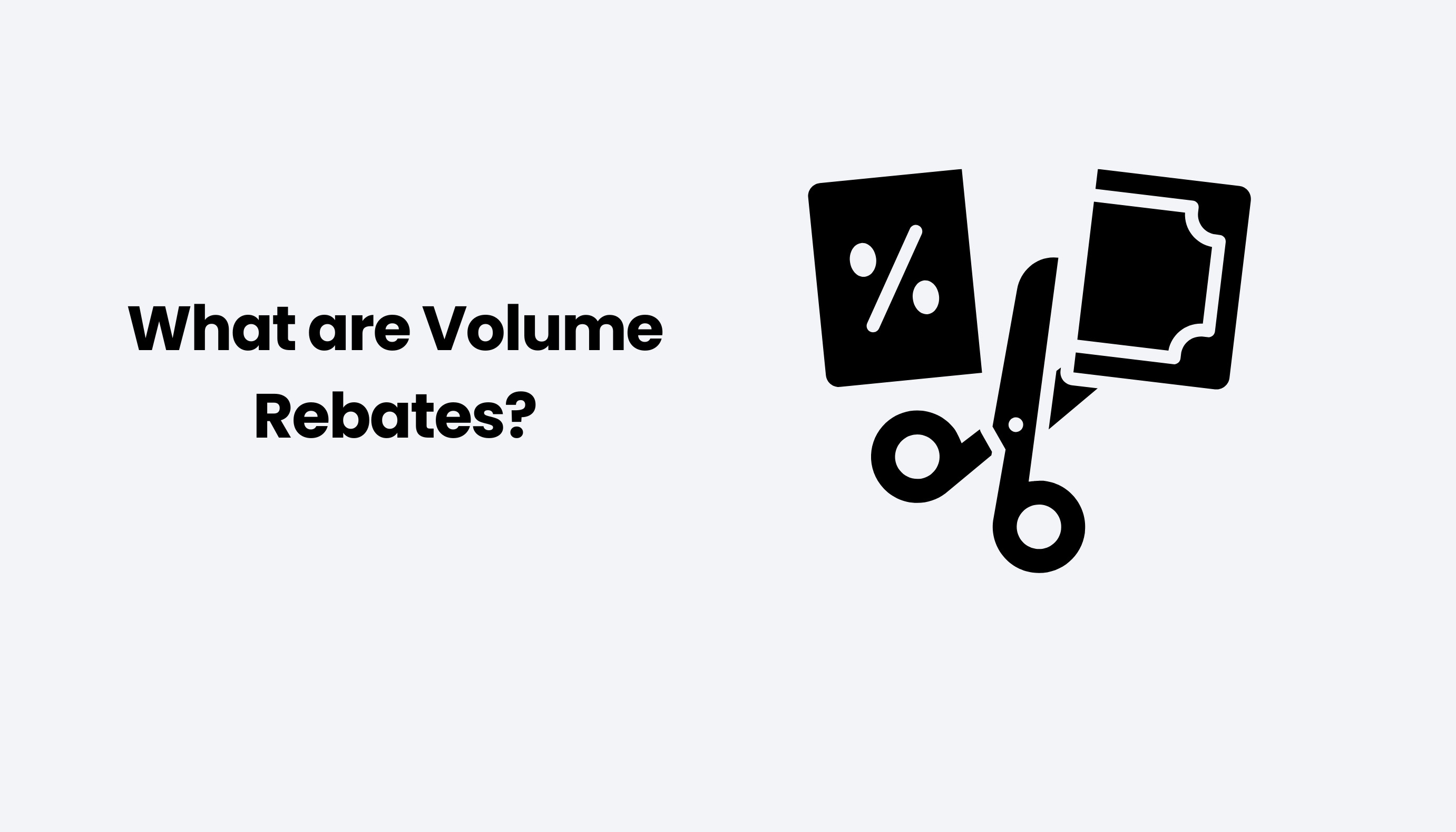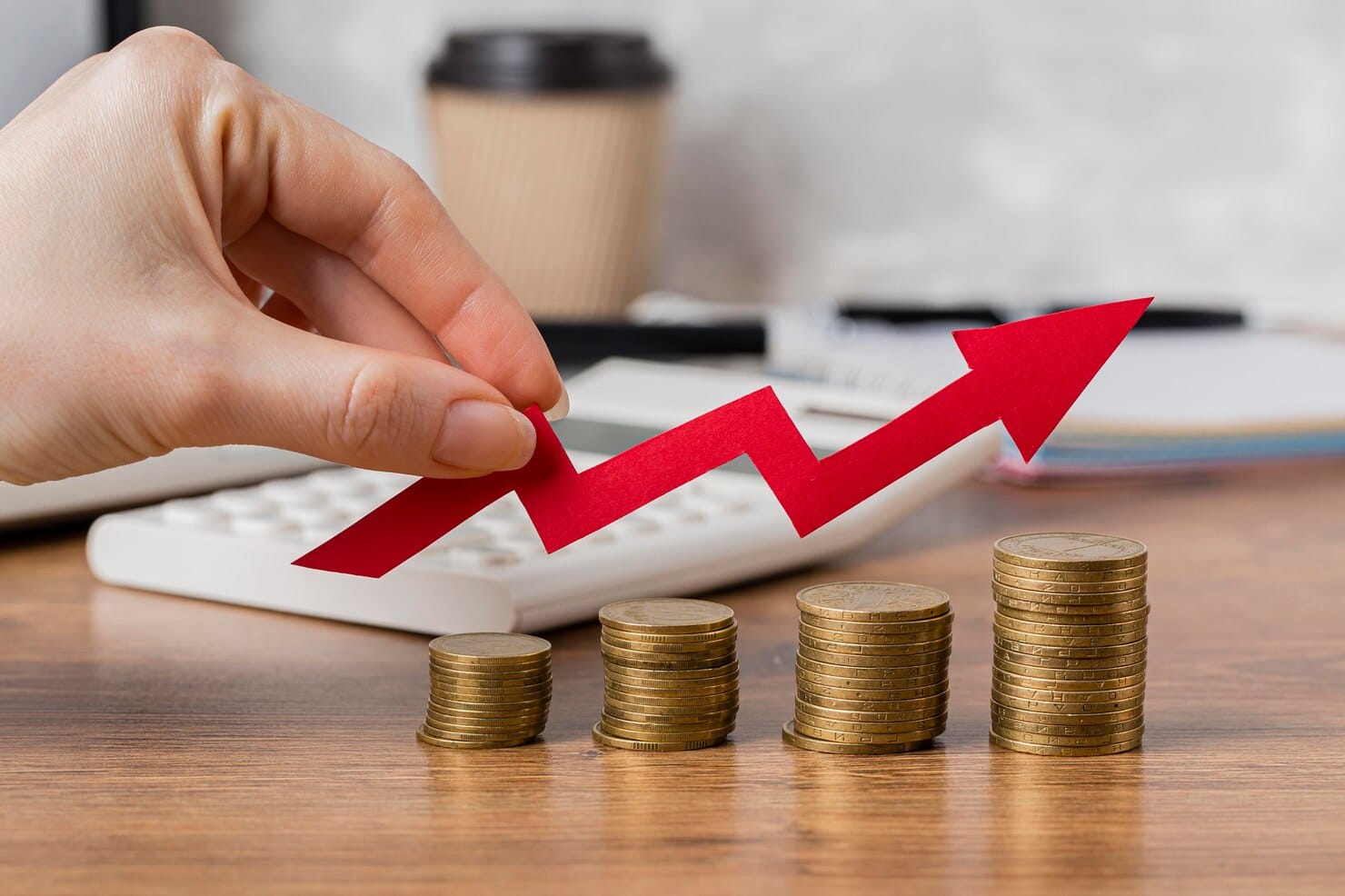What are Volume Rebates?

If you (as a vendor) solely rely on upfront discounts to drive volume-based sales, you are not protecting your organization from buyers over-promising during purchase price negotiations nor incentivizing your customers to make higher-volume purchases.
Volume Rebates are a B2B (business-to-business) exclusive form of incentive for inventory management and cost control. It is one of the various types of rebates that promote increased sales and customer loyalty. They offer incentives to buyers based on the volume or quantity of products sold.
Today, we will explore volume rebates with examples, their benefit, and role in driving sales.
Table of Contents:
Jump to a section that interests you, or keep reading.
What are Volume Rebates?

It is a great incentive program for any vendor trying to promote the sale of a certain product in bulk or drive loyalty with one trade partner over another. They are usually arranged in order of incremental benefit to the customer.
Volume incentive rebates are paid back to the buyer retrospectively (they are issued after the initial payment of goods and only once the terms of the agreement have been met).
Instead of quoting a price driven largely by the customer’s ‘intended’ or ‘promised’ volume, the seller responds with tiered pricing, where the Invoice Price is fixed. The actual price varies with volume, with the difference granted as a rebate.
Benefits of Volume Rebates

- Cost Savings for Buyers: Buyers or customers receive discounts or rebates based on the volume of products purchased. This reduces the overall purchasing costs as they increase their order sizes.
- Encourages Larger Orders: Suppliers can incentivize customers to place larger orders by offering rebates on higher volume purchases, thus boosting their sales.
- Strengthens Supplier-Customer Relationships: Volume-based rebates encourage long-term relationships, as customers are incentivized to keep purchasing from the same supplier to maximize their savings.
- Improves Sales Forecasting: Suppliers can use VIR programs to more accurately predict future sales based on customer buying patterns. This helps them improve inventory management and production planning.
- Customer retention: Volume rebates lock buyers in for the long term. As the buyer only qualifies for a rebate once they have crossed the volume threshold, the program incentivizes them to keep purchasing until they reach the required volume to maximize their rebate benefits.
- Customer Loyalty: Volume rebates also promote loyalty, as they protect the supplier from the risk of customers engaging with their competitors for similar products during the course of a deal.
- Protect sellers from buyers over-promising: As volume rebates are only granted when the buyer reaches a specified volume threshold, the seller only offers discounts based on actual, realized sales, not promises or estimates from the buyer.
- Reduce Customer Acquisition Spend: Suppliers can increase the revenue generated from each customer by encouraging larger purchases from the same set of customers.
Volume Rebate Example
A volume incentive rebate program should be tiered to drive greater volume purchases, with rebate amounts increasing incrementally in line with incentive targets or incremental volume thresholds.
In response to a customer inquiry, the seller quotes these volume per price combinations:
| Quantity | Price per Part |
|---|---|
| 1-100 | $100.00 |
| 101-500 | $97.50 |
| 501-1000 | $93.00 |
| 1001-5000 | $87.00 |
| >5000 | $82.50 |
Here:
- Quantity refers to the number of parts in each order rather than the cumulative quantity.
- The quoted price is not the invoice price, but the price after rebates are applied.
- In all cases, the supplier will invoice the customer at $100 per part, regardless of the quantity ordered at first.
- The time period for calculating rebates and price adjustments is a calendar quarter.
The net or pocket price the buyer pays after rebates is calculated based on the volume they purchase.
| Order Quantity | < 100 | 101 - 500 | 501 - 1000 | 1001 - 5000 | > 5000 |
|---|---|---|---|---|---|
| Invoice Price | $100.00 | $100.00 | $100.00 | $100.00 | $100.00 |
| Rebate per Part | $0 | $2.50 | $7.00 | $13.00 | $17.75 |
| Pocket Price per Part | $100.00 | $97.50 | $93.00 | $87.00 | $82.25 |
So, for example, if a customer orders 500 units during the quarter, they will be invoiced at $100 per part initially but receive a rebate of $7.00 per part at the end of the quarter, leading to a price of $93.00 per part to the buyer. The “pocket price” reflects the true cost to the buyer.
At the end of the quarter, the supplier will measure the customer’s actual purchases and issue a volume rebate based on the following calculation table:
| Order Quantity | Net Rebate Calculation |
|---|---|
| < 100 | No rebate |
| 101 - 500 | Order Quantity × $2.50 |
| 501 - 1000 | Order Quantity × $7.00 |
| 1001 - 5000 | Order Quantity × $13.00 |
| > 5000 | Order Quantity × $17.75 |
If the customer orders 600 units during the quarter they are invoiced at $100 per part, so the initial cost is 600 × $100 = $60,000. Since 600 units fall in the 501-1000 tier, the rebate is calculated at $7.00 per unit, resulting in a total rebate of 600 × $7.00 = $4,200. The pocket price per part after rebate is $93.00, and the total net cost after the rebate is $60,000 - $4,200 = $55,800.
Conclusion
The more buyers you deal with and the more rebates you offer, the more complex your volume rebate program will become. Therefore, it’s crucial to have an adequate system in place for tracking and managing all your rebate agreements.
This is where rebate management software comes into play. Rebate management software solutions like Speedy Labs help B2B organizations to easily and accurately implement and keep track of many different kinds of rebates for different buyers.
Find out more about how Speedy Labs help you manage and track your rebate incentive program.
